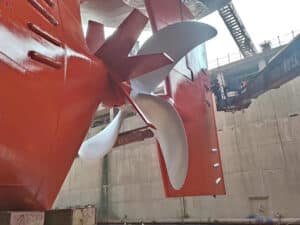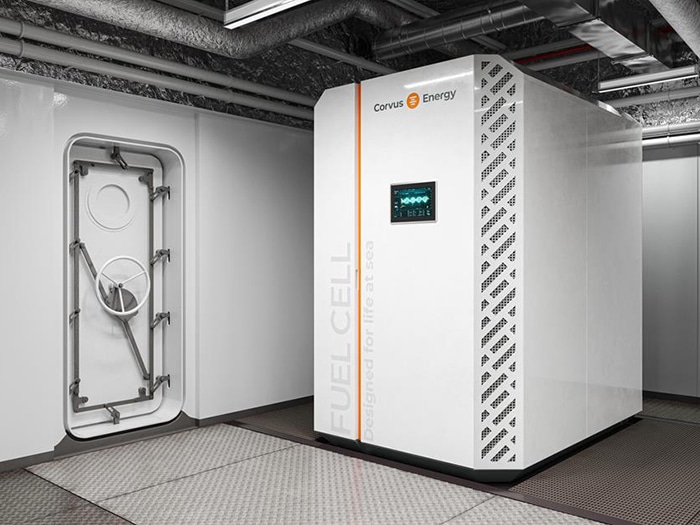
Corvus in project to integrate ammonia cracker tech with its fuel cell
Written by Nick Blenkey
Corvus Pelican fuel cell will be used to test ammonia cracker technology as part of EU-funded APOLO project. [Photo: Corvus Energy]
Corvus Energy has been awarded funding for the integration of ammonia cracker technology with its Pelican fuel cell system. It is partnering in a four-year EU-funded project called APOLO that aims to solve the challenges of power conversion from ammonia and develop an efficient and flexible ammonia cracking technology for the maritime sector.
Funded under Horizon Europe, the EU’s key funding program for research and innovation, APOLO will demonstrate power conversion from commercially available fuel cell systems with a power output of 125 kW, using hydrogen from ammonia cracking,The program will also test an ammonia cracker coupled with a novel ammonia engine running on an ammonia/hydrogen blend to compare the different technologies.
Partners in the project, in addition to Corvus Energy, are: H2Site, Tecnalia, Technische Universiteit Eindhoven, 1 CUBE, Chalmers Tekniska Hogskola, Nuvera, Astander, Fertiberia and LEC GMBH. Tecnalia will be the coordinator of the project.
Corvus Energy will work with H2Site and the other partners on the development, integration, testing and demonstration of the ammonia cracker and its Corvus Pelican PEM fuel cell. In addition, Corvus Energy will lead a work package developing a business case for using these systems onboard ships.
As we reported previously, H2Site last year successfully piloted the use of one of its membrane crackers in conjunction with a fuel cell to power an OSV’s auxiliary services during navigation.
“We are very grateful for the opportunity to collaborate on this exciting development. In decarbonizing the maritime sector, ammonia will be an essential part of the energy mix for ships sailing the longest routes and that also emit the most,” says Svenn Kjetil Haveland, VP development projects, “there are no commercially viable ammonia solutions available for the ship-owners as of today. Developing advanced methods for cracking ammonia and demonstrating scalability and overall system efficiency is an important step forward.”
Initially, the project focus will be on vessels with 1 MW to 10 MW propulsion installations, with a significant number of them being around 3 MW in the next decade, as these are seen as the first vessels relevant for ammonia-powered solutions.




